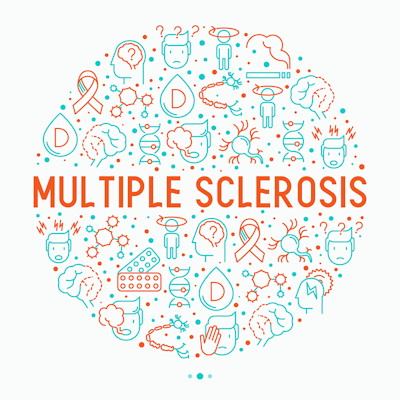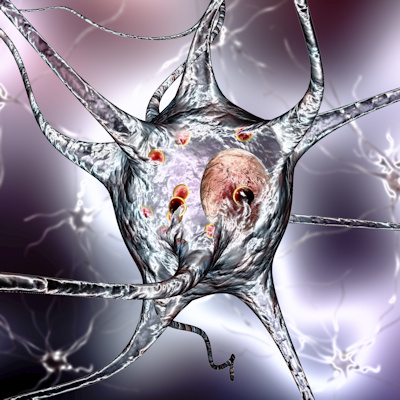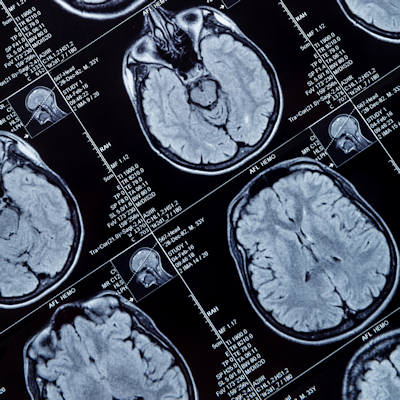April 21, 2023 -- Multiple sclerosis (MS) and related neurodegenerative disorders, including Alzheimer's and Huntington's disease, affect about 2.8 million people worldwide. MS, an autoimmune disease in which the immune system mistakenly attacks its own healthy cells, has specific hallmarks, including neuroinflammation and the degeneration of myelin, an insulating sheath required for rapid nerve-cell communication. Research published Thursday in Cell Metabolism describes how myelin breakdown results in the accumulation of very-long-chain fatty acids (VLCFA), which triggers this damaging response.
The researchers found that the loss of neurons and glia -- the two major types of brain cells -- could be suppressed with bezafibrate, a lipid-lowering drug that inhibits the synthesis of VLCFA. To understand how increased levels of VLCFA in the glia affected lipid metabolism, they performed a mass spectrometric analysis of 26 lipids obtained from adult fly heads lacking the fly version of the dACOX1 gene. They found that two lipid intermediates -- very long ceramides and sphingosine-1-phosphate (S1P) -- were significantly higher in the glia of these flies.
Excess glial S1P, a VLCFA breakdown product, was transported to the neurons; this increase was detrimental to both glia and neuron survival, causing these cells to malfunction and degenerate. However, supplementing dACOX1 mutant flies with fingolimod, an MS treatment drug, led to improvements in overall viability and neuronal function and delayed neurodegeneration in these flies.
The researchers also observed that flies lacking dACOX1 had several large black, melanotic masses throughout their bodies, including the head, eye, wing margins, and abdomen. This suggested that the absence of dACOX1 induced the immune cells to attack their own cells.
They next investigated whether dACOX1 loss also activated other immune pathways. One of two major immune pathways in flies -- the immune deficiency pathway -- helps control inducible immune responses to invading bacteria and fungi by producing cytokines and antimicrobial peptides upon activation of nuclear factor-kB. The researchers found that elevated S1P in fly glia activates nuclear factor-kB, which in turn significantly increases the transcript levels of several antimicrobial peptide genes involved in the immune deficiency pathway.
The team then explored the role of elevated VLCFA and S1P in MS progression in mice with induced MS-like pathology and immune responses. They found that pre-symptomatic treatment of these mice with bezafibrate reduced demyelination and neuronal damage. When they administered bezafibrate along with fingolimod at the onset of symptoms, they saw a synergistic improvement in induced paralysis and motor performance, demyelination, and neuronal loss. The combined effects of these drugs were significantly better than the effect of either drug alone. They concluded that the simultaneous use of bezafibrate and fingolimod improved induced MS symptoms in mice, suggesting that lowering VLCFA and S1P may be a treatment avenue for MS.
"We are excited by the potential clinical implications of this study, not just in how we treat MS patients but also for other neurodegenerative conditions associated with demyelination, disruptions in lipid metabolism, and neuroinflammation," Dr. Hugo Bellen, co-author and Baylor University professor, said in a statement.
Copyright © 2023 scienceboard.net













